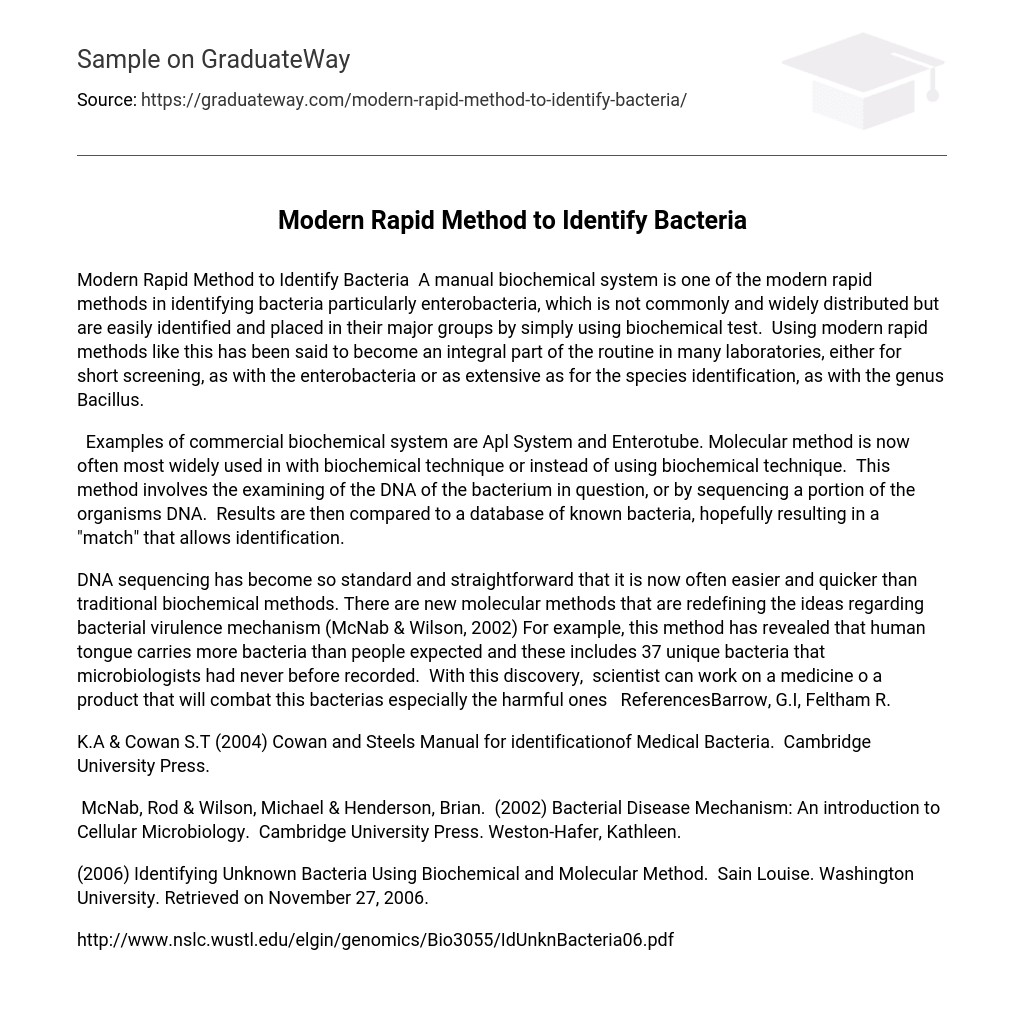A manual biochemical system is one of the modern rapid methods in identifying bacteria, particularly enterobacteria, which is not commonly and widely distributed but are easily identified and placed in their major groups by simply using biochemical test. Using modern rapid methods like this has been said to become an integral part of the routine in many laboratories, either for short screening, as with the enterobacteria or as extensive as for the species identification, as with the genus Bacillus. Examples of commercial biochemical system are Apl System and Enterotube. Molecular method is now often most widely used in with biochemical technique or instead of using biochemical technique. This method involves the examining of the DNA of the bacterium in question, or by sequencing a portion of the organisms DNA.
Results are then compared to a database of known bacteria, hopefully resulting in a “match” that allows identification. DNA sequencing has become so standard and straightforward that it is now often easier and quicker than traditional biochemical methods. There are new molecular methods that are redefining the ideas regarding bacterial virulence mechanism. For example, this method has revealed that human tongue carries more bacteria than people expected and these includes 37 unique bacteria that microbiologists had never before recorded. With this discovery, scientist can work on a medicine o a product that will combat this bacterias especially the harmful ones
References
- Barrow, G.I, Feltham R. K.A & Cowan S.T (2004) Cowan and Steels Manual for identificationof Medical Bacteria. Cambridge University Press.
- McNab, Rod & Wilson, Michael & Henderson, Brian. (2002) Bacterial Disease Mechanism: An introduction to Cellular Microbiology. Cambridge University Press. Weston-Hafer, Kathleen. (2006)
- Identifying Unknown Bacteria Using Biochemical and Molecular Method. Sain Louise. Washington University. Retrieved on November 27, 2006. http://www.nslc.wustl.edu/elgin/genomics/Bio3055/IdUnknBacteria06.pdf





